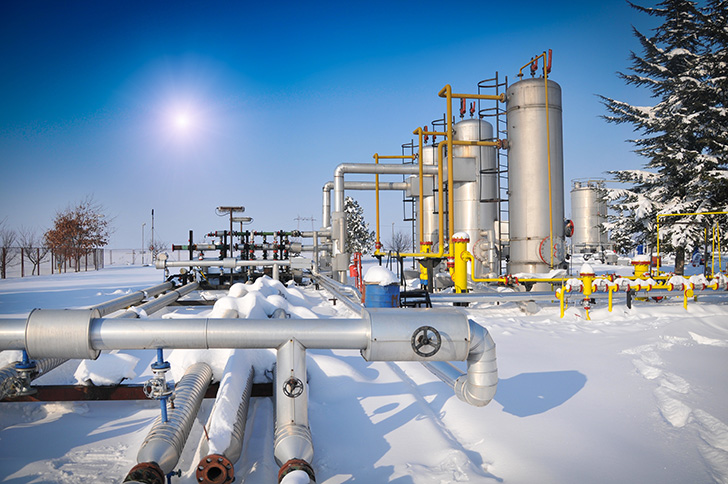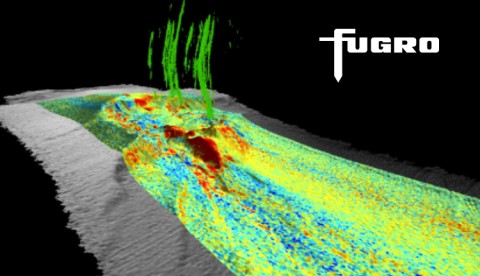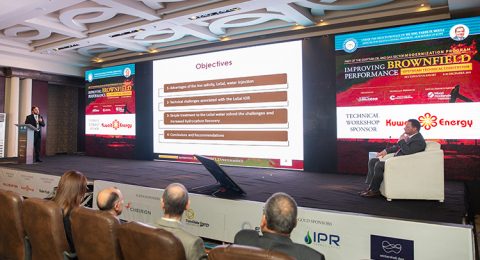By Mariana Somensi
Exploring different areas in the hunt for oil and gas resources is of undeniable importance when it comes to expanding output levels. However, in order to ensure that proved production capacity remains at its highest rates, operators must equally invest in well-developed recovery infrastructure and managing technology.
Large investments in infrastructure and the re-use of reservoirs features to enable secondary and enhanced recovery help improve reservoir’s pressure and, subsequently, assure full capacity production at oil and gas fields, which also save costs.
Additionally, applying high-technology programs to the fields to monitor installed infrastructure helps operators quickly spot technical failures, avoiding a huge quantity of hydrocarbons waste, and reducing the risk of having to shut down the facility for maintenance.
Considering the importance of the petroleum industry to move all the other sectors of a country’s economy, squeezing reservoirs to profit from each drop of oil and every single cubic meter of gas is the key to keep the industry moving. Accordingly, the investments in recovery infrastructure and infrastructure monitoring are main priorities operators should set.
Why Improving Reservoir Pressure?
When oil and gas reservoirs start producing through its primary recovery phase, the subsurface pressure is usually enough for a number of years to force supply into the well. Nevertheless, reservoir pressure naturally dissipates, and the biggest percentage of the field’s capacity remains underground. When it comes to oil production, for instance, an analysis published by the US Department of Energy shows that primary recovery usually leaves 60% or more of residual oils.
In gas and condensate production, performance also decreases over time. It happens because, when condensate liquid is formed in a gas reservoir, small drops of condensate tend to be trapped in tiny pores, which reduces the gas mobility to flow toward the well.
There are two subsequent phases to pump oil and gas after subsurface pressure is no longer enough; secondary and enhanced recovery. The secondary recovery is usually accomplished by filling the well with gas or water to replace produced fluids and maintain or boost the asset’s pressure. Global International Sellers’ CEO, Antonio Bhardwaj, explained in his study – Challenges and Solutions in an Upstream and Downstream Oil and Gas Operations that secondary recovery techniques result “in the recovery of 20% to 40% of the original oil in place.”
However, as much as one-third of the field’s capacity remains untouched, opening space to enhanced recovery strategies. A common and effective enhanced maneuver is the injection of carbon dioxide (CO2) in the reservoirs previously recovered by water flooding.
As a matter of course, additional infrastructure to inject water and gas into the wells and increase pressure is extremely necessary to pump the remaining resources and reach the huge amount of hydrocarbons left after primary recovery. For that purpose, the investment in pipelines, compressors and air separation plants play an important role in the petroleum fields.
CO2 and Nitrogen Injection Infrastructure
CO2 and Nitrogen are two of the gases injected in oil and gas wells to maintain reservoir pressure and improve recovery. Physically, there are some differences between the usage of both gases. CO2 usually requires a larger quantity of gas to create high pressure since it needs more compression than Nitrogen.
To enable CO2 and Nitrogen injection, an oil and gas facility must contain specific infrastructures added to the regular pumping jacks. The infrastructure features include CO2 or Nitrogen pipeline metering, injection wellheads, processing plants where the gases are collected for re-injection, separators for separating produced fluids (oil, water, and gas), well production manifold to allow individual testing of wells, and compressors to compress the gases prior to re-injection.
According to The Linde Group, a gas and engineering company, the Abu Dhabi National Oil Company (ADNOC) is one of the petroleum firms that successfully applied gas injection to recover its facilities. In 2011, Linde and ADNOC founded the joint venture Elixier and constructed two major air separation plants in Mirfa, a coastal city in Abu Dhabi. As stated by Linde, the air separation plants held a capacity of 670,000 cubic meters of Nitrogen per hour, which was transported to ADNOC’s inland Habshan field via a 50-kilometer long pipeline to boost recovery at oil and gas reserves. Considering the high reliance of natural gas to produce electricity and the importance of stable oil output in a country that relies on crude exports, the investment in the Nitrogen separation facilities was of extreme importance to avoid energy shortages and economic crisis.
In Egypt, Tanmia Petroleum Company and Petrosannan Company also bet their cards on recovery infrastructure to boost reservoir pressure. The two companies launched a project at AESE-6 Concession Area, in Alam El Shawish East, focusing on investments in pipelines and compressors to boost daily gas output to around 20.8 million cubic feet per day, in addition to 800-900 billion barrels per day of condensate.
As much as $12 million of investments were directed to the installation of dehydrated equipment to pumping dry gases. Additionally, the process included the installation of a compressor to recover flared gases at Karima oil facility. The compressor is important as it maintains flow rate of gas above hydraulic limit for more time if compared to production by natural pressure, which results in more hydrocarbons recovered from the reservoir.
Parallel to this investment, an amount of $2.3 million was raised to the construction of new gas pipelines. The Front End Engineering Design (FEED) included building a gas pipeline with eight inches of diameter and 22 kilometers of length, and an oil pipeline equally designed with 8 inches of diameter and 28 kilometers of length. Furthermore, internal flow lines between the field’s HG and AES-E6 stations were built, which included an oil pipeline of 19 kilometers of length and 6 inches of diameter, and another one with the same length and diameter for gas. Large pipelines are usually required to maintain high production rates when reservoir pressure has declined.
As Egypt struggles to reduce the deficit at its petroleum trade balance and to overcome its energy shortages, the infrastructure project at AESE-6 Concession Area to enhance recovery represents a great asset to help the African nation face its challenges.
Production Impact of Recovery Investments
An analysis on the Oil Denver Unit in the Wasson Field in West Texas, US, exposed the impacts of investing in water flooding and CO2 recovery infrastructure in output levels. The field, which began operations under primary recovery in 1938, started receiving water injections to boost reservoir pressure in 1965. By the end of 1982, the amount of water in the formation was considered higher than the volume of oil, which led operators to shift from water flooding to CO2 enhanced oil recovery (EOR).
“At the end of 1998, one could determine the incremental oil attributable to CO2 EOR by calculating the cumulative difference between the projected decline rate without CO2 injection and the actual production rate,” data from the US Department of Energy explained.
Through this analysis, it was possible to identify that during 2008 the CO2 EOR project at Wasson Field’s Denver Unit resulted in the recovery of more than 120 million barrels. In 2010, the field’s output reached about 31,500 barrels of oil per day, of which 26,850 barrels consisted of incremental oil recovered from CO2 injections.
The proved results of water and gas injections led many countries to direct huge amounts of investments to its facilities’ recovery infrastructure. Iran, for instance, announced in early January 2017 its intentions to increase recovery factors of oilfields by 14%, which would add $400 billion to the worth of Iranian oil and gas reserves.
The National Iranian Oil Company’s (NIOC) Deputy Head for Development and Engineering Affairs, Gholamreza Manouchehri, stated in a petroleum conference that the plan to boost the country’s recovery factor is set to happen in a 30-year timeframe. “Assuming that the overall capacity is 800 billion barrels, the 30-year plan will add 1% equal to 8 billion barrels to Iran’s oil reserves,” Manouchehri further explained.
Monitoring Techniques
Although improvements in recovery infrastructure are a more direct approach to keep production levels high, infrastructure-monitoring technology is also a great strategy to be added to existing features to prevent risks and help the operator understand reservoir behavior.
By monitoring upstream facilities, it is possible to assure cost-effective flow of hydrocarbons from reservoir to refinery, as well as prevent oil and gas waste related to corrosion damage, leakage and equipment breakdowns – a prevention that would considerably reduce costs in the total infrastructure budget.
Vincent Vieugue, in his article “How Subsea Solutions Can Enhance Oil Recovery”, which was written for Emerson Process Management, explained the monitoring benefits in the deep-water Independence Hub field in the Gulf of Mexico, which went through a production-flow-rate, measurement and hydrate prevention process. According to him, “the ability for the operator, Anadarko, to predict and measure the water production profile for subsea wells is critical for optimizing production, preventing hydrate, scaling corrosion in pipelines, providing input to hydrate prevention strategies, and ensuring reliability of supply.”
Moreover, it is highly beneficial to establish a reservoir management protocol to create a sustainable production strategy. “This requires a balancing act between the need to enhance oil and gas recovery while at the same time ensuring that there are no significant risks of the premature shut-in of wells” Vieugue explained in his article.
As an operational example, he mentioned the functionality of subsea multiphase and wet gas meters, as well as the downhole pressure and temperature tools. Vieugue stated that Egypt’s offshore West Delta Deep Marine (WDDM) concession received 49 wet gas meters to monitor water production and optimize gas production within normal water rates.
He stated that, in a four-month period, the usage of the meters avoided two water breakthroughs, identified zones for water production and helped the concession’s operator, Burullus, optimize its gas production. “By providing early warnings of the water produced, the meters have helped Burullus and its partners save three wells from water breakthrough and resulted in a sustainable production strategy moving forward,” he added.
Vieugue also mentioned how the advances in wireless technologies are helping operators generate information from reservoir areas of difficult access. The wireless tools are capable of providing pressure and temperature reports from behind offshore parts that other survey technologies cannot reach. This functionality is extremely helpful in the prevention of pressure build-up and shallow gas blowouts, fatalities that could completely drop output and result in a huge infrastructure maintenance cost.
Big Data Surveys
The huge numbers in oil and gas reservoir data are difficult to be managed, especially in long-term prospects. To support the real-time decision-making, the petroleum industry must have in hands a compilation of assets’ information that is clear and fast to be interpreted.
According to a study presented in the 21st World Petroleum Congress in Moscow, Sonatrach’s Cadre Supérieur, Abdelkader Baaziz, and the Professor at the University of Sud Toulon-Var, Luc Quoniam, stated that “being able to process Big Data makes it possible to derive insight from the relationships that will surface when all of these sources are processed as a whole.” Furthermore, combining the information provided and advanced analytics in Exploration and Development activities enable risk-minimized strategic and operation decision-making.
As the two specialists suggested, “Big Data is of great interest to production and operation work. Being able to predict future performance based on historical results, or to identify sub-par production zones, can be used to shift assets to more productive areas.” Accordingly, petroleum facilities experience a significant improvement in oil recovery rates.
Since boosting oil and gas recovery is a major goal for field operators, Big Data technologies are a huge asset for reservoir engineers as it shows seismic, drilling and production data at once in a very organized way. According to Baaziz and Quoniam, it helps reservoir engineers “map changes in the reservoir over time and provide decision support to production engineers for making changes in lifting methods.”
Until the Last Drop
The impact of the oil and gas industry is enormous on almost every other commodity in world. Due to its huge responsibility in supporting key sectors of the global economy, it is critical to identify risk and solutions during oil and gas production.
Accordingly, investments in infrastructure and technology development to boost reservoir recovery are needful tools to eliminate oil and gas waste, ensure long-lasting supplies and significantly reduce production costs. Infrastructure is the basic physical system of a nation; therefore, its improvement and efficient management in the petroleum sector is the key to keep the industry alive.








